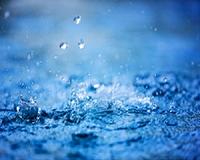 |
Tel Aviv, Israel (SPX) Feb 03, 2011 Quantum mechanics, developed in the 1920s, has had an enormous impact in explaining how matter works. The elementary particles that make up different forms of matter - such as electrons, protons, neutrons and photons - are well understood within the model quantum physics provides. Even now, some 90 years later, new scientific principles in quantum physics are being described. The most recent gives the world a glimpse into the seemingly impossible. Prof. Eran Rabani of Tel Aviv University's School of Chemistry and his colleagues at Columbia University have discovered a new quantum mechanical effect with glass-forming liquids. They've determined that it's possible to melt glass - not by heating it, but by cooling it to a temperature near Absolute Zero. This new basic science research, to be published in Nature Physics, has limited practical application so far, says Prof. Rabani. But knowing why materials behave as they do paves the way for breakthroughs of the future. "The interesting story here," says Prof. Rabani, "is that by quantum effect, we can melt glass by cooling it. Normally, we melt glasses with heat."
Turning the thermometer upside-down Based on this principle, Prof. Rabani and his colleagues were able to demonstrate their surprising natural phenomenon with glass. Many different materials on earth, like the silica used in windows, can become a glass - at least in theory - if they are cooled fast enough. But the new research by Prof. Rabani and his colleagues demonstrates that under very special conditions, a few degrees above Absolute Zero (-459.67 degrees Fahrenheit), a glass might melt. It all has to do with how molecules in materials are ordered, Prof. Rabani explains. At some point in the cooling phase, a material can become glass and then liquid if the right conditions exist. "We hope that future laboratory experiments will prove our predictions," he says, looking forward to this new basic science paving the way for continued research.
Classical glass Until now, structural quantum glasses had never been explored - that is, what happens when you mix the unique properties in glass and add quantum effects. Prof. Rabani was challenged to ask: if we looked at the quantum level, would we still see the hallmarks of a classical glass? What the researchers unearthed is a new and unique hallmark, showing that quantum glasses have a unique signature. Many materials he says can form a glass if they're cooled fast enough. Even though their theory is not practical for daily use: few individuals own freezers that dip down nearly 500 degrees below zero.
Share This Article With Planet Earth
Related Links Tel Aviv University Space Technology News - Applications and Research
 Researchers Discover How To Tame Hammering Droplets
Researchers Discover How To Tame Hammering DropletsBoston MA (SPX) Jan 25, 2011 A water hammer can occur when a valve is suddenly opened or closed in a pipe carrying water or steam, causing a pressure wave to travel down the pipe with enough force that it can sometimes cause the pipes to burst. Now, new research shows that a similar effect takes places on a tiny scale whenever a droplet of water strikes a surface. MIT's Kripa Varanasi, co-author of a report on the new ... read more |
|
| The content herein, unless otherwise known to be public domain, are Copyright 1995-2010 - SpaceDaily. AFP and UPI Wire Stories are copyright Agence France-Presse and United Press International. ESA Portal Reports are copyright European Space Agency. All NASA sourced material is public domain. Additional copyrights may apply in whole or part to other bona fide parties. Advertising does not imply endorsement,agreement or approval of any opinions, statements or information provided by SpaceDaily on any Web page published or hosted by SpaceDaily. Privacy Statement |